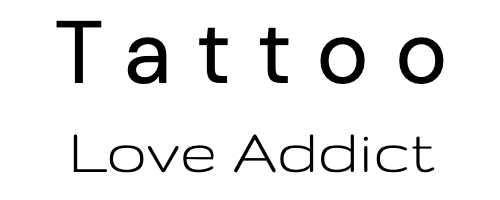The Real Meaning Behind Tattoo Placement: What Your Spot Says About You
In the world of body art, tattoos are more than just ink on skin—they’re declarations of identity, love, rebellion, healing, or even quiet whispers of secrets we carry close.
For women, the act of choosing a tattoo design is deeply personal, but have you ever considered that where you place your tattoo matters just as much as what it depicts?
From the nape of the neck to the tips of your toes, every spot on the body carries its own symbolism.
Whether you’re a first-time tattoo enthusiast or a seasoned collector, understanding the hidden language of placement can add layers of meaning to your art.
Let’s decode what your chosen canvas says about you.
1. The Head: Boldness Meets Spirituality
Tattoos on the scalp, forehead, or behind the ear are rare but loaded with meaning. Historically, head tattoos were sacred in many Indigenous cultures, symbolizing protection, spiritual awakening, or rites of passage.
In modern Western contexts, a head tattoo (often peeking through shaved hair or styled strands) signals audacity.
Women who choose this spot are fearless about visibility—they’re unapologetically owning their narratives.
Behind-the-ear designs, however, lean into subtlety.
Think of a tiny star or mandala here: it’s a quiet nod to intuition, wisdom, or a reminder to listen closely to one’s inner voice.
Psychology angle: Head tattoos often correlate with a desire to break societal norms. They’re favored by women who view their bodies as evolving art galleries rather than static canvases.
Design tip: Delicate linework or geometric patterns work well here, balancing bold placement with intricate detail.
2. The Neck: A Magnet for Attention (and Judgment)
The neck is arguably the most provocative mainstream tattoo location.
A throat choker of vines, a cursive quote along the hairline, or a butterfly resting on the collarbone—these designs draw eyes instantly.
Neck tattoos have long been associated with rebellion (think punk rock icons), but they’ve evolved into statements of self-assurance.
For women, this spot often represents reclaiming autonomy over their bodies, especially if the design symbolizes survival or empowerment (e.g., a phoenix, a semicolon, or a lioness).
But beware: Societal biases persist.
A visible neck tattoo may still draw unwelcome assumptions about “professionalism” or “femininity.” Choosing this spot is, in itself, a middle finger to outdated stereotypes.
Celeb inspiration: Rihanna’s “Never a Failure, Always a Lesson” behind her ear and RAYE’s throat tattoos embody this fearless energy.
3. The Chest: Vulnerability and Sacred Love
The chest—close to the heart—is where emotion and intimacy collide.
Women often ink names, portraits, or symbols of love here (a heartbeat line, an anchor, or blooming roses).
For some, it’s a tribute to family; for others, a mantra that grounds them during anxiety.
Chest pieces can also be deeply private, hidden under clothing but felt intensely by the wearer.
In feminist circles, chest tattoos reclaim a space often hypersexualized by society.
A bold sternum tattoo, for example, transforms the male gaze into a celebration of feminine power.
Symbolic twist: A bird in flight across the chest might symbolize freedom from past trauma, while a moon phase could honor cyclical strength.
4. The Arm: Storytelling and Strength
Arms are storytelling canvases.
Sleeve tattoos, in particular, weave together personal milestones, cultural heritage, or aesthetic themes.
The upper arm (bicep/shoulder) is classic for symbols of strength—think wolves, compasses, or goddess figures.
Lower arm and wrist designs, meanwhile, are more conversational.
A quote on the inner wrist (“breathe,” “still I rise”) serves as a daily mantra, while floral sleeves might connect the wearer to nature or femininity.
For women, arm tattoos often reflect resilience.
A survivor of illness might choose a blooming lotus; a mother, a child’s birthdate. The visibility here says, “This is my journey—ask me about it.”
Design trend: Fine-line blackwork and watercolor splashes dominate modern arm tattoos, blending softness with edge.
5. The Wrist: Visibility and Self-Expression
The wrist is the ultimate “open book” location. Its prominence makes it ideal for small, meaningful symbols meant to be seen: a heartbeat line, an arrow, or a Roman numeral date.
Psychologists note that wrist tattoos often correlate with a desire for control or mindfulness—anchors to the present moment.
For survivors of self-harm, covering scars with art here can be transformative.
On the flip side, a wrist tattoo’s visibility means owners are comfortable with scrutiny. It’s a badge of confidence: This is who I am, unedited.
Cultural caveat: In some spiritual traditions, the left wrist (closest to the heart) holds special significance.
6. The Back: Secrets and Protection
The back is a paradoxical space—both a shield and a secret keeper.
A sprawling back piece might symbolize protection (angel wings, tribal patterns) or personal metamorphosis (a caterpillar becoming a butterfly).
Lower back tattoos, once stigmatized as “tramp stamps,” are being redefined by women as symbols of body positivity and sensuality.
Upper back designs near the shoulders often carry weighty themes: “This is my burden to bear” or “Here lies my history.”
A single word between the shoulder blades (“courage,” “worthy”) can feel like a loved one’s reassuring hand.
Mythology link: In ancient Egypt, the back was considered the seat of the soul—a belief mirrored in modern back tattoos that honor ancestral roots.
7. The Ribcage: Pain, Privacy, and Power
Rib tattoos are not for the faint of heart—literally. The proximity to bones and nerves makes this one of the most painful spots, which is why designs here often symbolize endurance.
Quotes, sacred geometry, or portraits tucked along the ribs tend to be deeply personal, hidden from public view but intimately known to the wearer.
For women, ribcage art frequently relates to motherhood (a child’s footprint), loss (a memorial date), or sensuality (a lace-like floral vine). It’s a whisper of strength: I’ve survived this pain, and I’d do it again.
Cultural nod: In Japanese Irezumi, ribcage dragons symbolize balance and protection.
8. The Stomach: Femininity and Transformation
The stomach—a site of literal growth during pregnancy—is a potent canvas for themes of creation, change, and self-love.
Stretch marks turned into vines, a rising sun below the navel, or a lotus emerging from murky water all honor the body’s ability to transform.
For women who’ve experienced eating disorders or body dysmorphia, stomach tattoos can be radical acts of reclaiming ownership.
A bold mandala or tiger here says, “This body is mine, and it’s powerful.”
Healing angle: Many choose stomach tattoos post-pregnancy or surgery to celebrate their body’s resilience.
9. The Hip/Thigh: Sensuality and Mystery
Hip and thigh tattoos are the ultimate blend of mystery and allure.
Often concealed but revealed in intimate moments or swimsuits, these designs—vines curling around the hip bone, a crescent moon on the thigh—embody femininity and self-assured sexuality.
Historically, thigh tattoos were linked to fertility rituals.
Today, they’re chosen by women comfortable with their sensuality but selective about who sees it.
A rose here might say, “My beauty is for me first.”
Design trend: Ornamental henna-inspired patterns and minimalist line art thrive in this zone.
10. The Finger: Commitment and Whimsy
Tiny finger tattoos (a ring of stars, a minimalist heart) pack symbolic punch.
They’re permanent “jewelry,” often symbolizing commitment—to a partner, a cause, or oneself.
A semicolon on the pinky might signify mental health advocacy; an arrow on the index finger, purpose.
But beware: Finger tattoos fade faster due to frequent washing and sun exposure.
Choosing this spot signals a willingness to retouch and recommit.
Pop culture: Hailey Bieber’s “J” ring finger tattoo and Lady Gaga’s “Rebel Heart” knuckle script epitomize this trend.
11. The Ankle/Foot: Freedom and Wanderlust
Ankle bracelets of ivy, compasses on the foot, or waves lapping at the heel—these designs scream wanderlust.
Ankle tattoos were once deemed “tame,” but they’ve evolved into badges of freedom.
For women, they often mark a journey (literal or emotional), a love of travel, or a connection to earth energy.
The foot’s association with grounding makes it ideal for nature-themed ink.
Just know: Foot tattoos fade quickly, so they’re best for those who embrace impermanence.
Mythic touch: In Celtic lore, ankle knots symbolize eternal bonds—perfect for sisters or best friends.
12. Behind the Ear: Subtlety and Mystery
A hummingbird, a constellation, or a single word tucked behind the ear—this is the spot for women who want their tattoos to feel like secrets.
It’s intimate, revealed only when hair is pulled back, making it ideal for symbols of intuition or memory.
A date, a name, or a musical note here keeps a loved one “close” in both sight and sound.
Psychologically, behind-the-ear ink often correlates with introversion or a mindful, detail-oriented personality.
Conclusion: Your Body, Your Story
Tattoo placement is a language—a way to broadcast or protect your truth.
While cultural stereotypes and pain thresholds play a role, the most profound meaning comes from your intention
Whether you choose a thumb-sized heart on your wrist or a full back mural, remember: Your body is your narrative. Every scar, curve, and inked symbol writes a chapter.
So, where will you place your next sentence?

